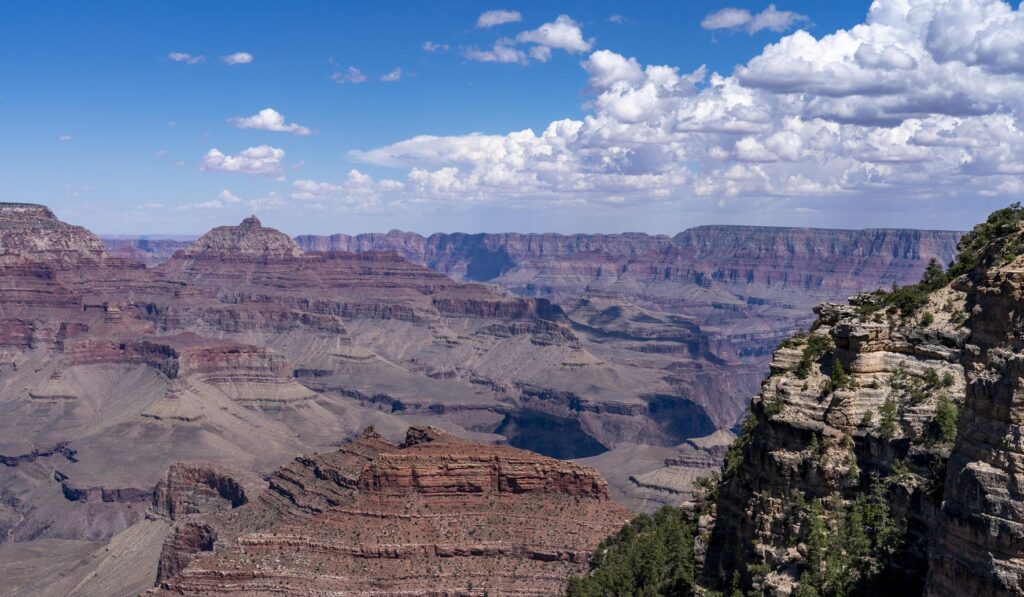A 65-year-old man slipped from the edge of the Grand Canyon on the Hualapai Reservation in Arizona and fell more than 100 feet onto a pile of rock shards, dying earlier this week.
The fall took place on the Hualapai Reservation, a section of the canyon managed by tribal authorities rather than the National Park Service. Tribal land along the canyon has popular overlooks that can be rugged and abrupt, and that landscape played a central role in the fatality. Officials described the victim as a 65-year-old man who slipped over the canyon rim and fell more than 100 feet onto sharp rocks below.
Emergency crews were notified after the fall and responders arrived at the scene to assess the situation and recover the body. The steep, unstable terrain made the response difficult and hazardous for rescuers working along narrow ledges and loose scree. Tribal emergency personnel coordinated the on-site efforts, following protocols for incidents on reservation land where different agencies may be involved.
Visitors to canyon rim areas often misjudge footing or get too close to the edge for photos, and that behavior increases the risk of falls. Loose rock and unexpected ground give way more easily than people expect, especially where paths are narrow or unpaved. Even experienced hikers can lose their balance near drop-offs when they are distracted or when wind and weather conditions change suddenly.
The Hualapai Reservation contains viewpoints that draw many tourists, which raises questions about how safety is managed at those sites. Some overlooks include protective railings and paved walkways, while others remain more natural and exposed to the elements. The mix of developed and undeveloped spots means visitors should stay alert to signage and unexpected hazards underfoot.
Local tribal authorities are responsible for managing access, issuing permits for certain activities, and coordinating emergency response on reservation land. That differs from areas run by federal agencies, and it affects who leads search and recovery efforts after accidents. Families and visitors told authorities that they were shaken by the incident and reminded others to exercise caution around rim areas.
Accidents like this highlight the razor-thin margin for error at canyon edges, where a single misstep can be fatal and rescue options are limited. Medical help can be delayed by the difficulty of reaching steep remote spots, and the terrain often prevents rapid evacuation. When cliffs drop hundreds of feet, even minor injuries can become catastrophic before help arrives.
Many popular canyon overlooks attract people who want unobstructed views and dramatic photos, which sometimes encourages risky behavior. Social media and the desire for striking images can push visitors toward exposed areas that are not designed for safe foot traffic. Responsible tourism experts recommend keeping a secure distance from the rim and never turning your back on unstable ground when taking pictures.
Emergency response teams face challenges in accessing debris fields where falls occur, especially when victims land on piles of sharp rock shards or talus slopes. Those piles can shift underfoot and complicate recovery operations, forcing teams to move slowly and use specialized gear. Safety for the rescuers becomes an immediate concern, adding layers of logistical complexity to what would otherwise be a straightforward recovery.
Local leaders and tribal officials often use tragedies to remind the public of basic precautions that reduce the chance of similar outcomes. Simple steps such as staying on marked trails, keeping children and pets close, and avoiding rim edges in windy or wet conditions can lower risk. Education and clear signage are part of a long-term approach to safety in areas where natural beauty and danger coexist.
Visitors planning trips to canyon country should research who manages the areas they intend to visit and what rules apply, because jurisdiction determines available services and the organization of emergency response. Different sections of the canyon have different rules about access, commercial operations, and visitor facilities. Knowing that distinction helps travelers prepare for the less forgiving parts of the landscape.
The recent death is a sober reminder that spectacular scenery can hide serious hazards, and that the canyon does not tolerate carelessness. Tribal officials continue to work with local responders to review the incident and share safety information with visitors. Communities near the canyon often respond to such events by increasing outreach and reinforcing guidance for safe behavior on rim trails.
Friends and family of the man who died are left to grieve and to hope that others will take the cautionary lesson to heart when visiting the canyon. The natural wonder invites awe, but it also demands respect for its raw and unpredictable edges. Awareness, restraint, and attention to basic safety remain the best protections against future tragedies in canyon country.



